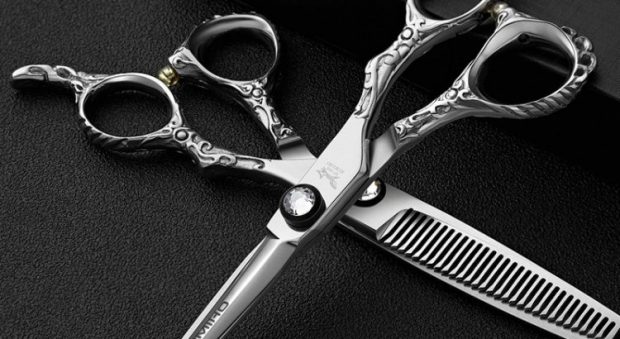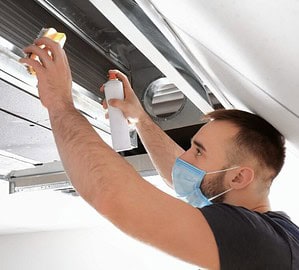A pair of hairdressing scissors is an extension of the master’s hand. Proper maintenance will help keep your performance at a high-quality level, extend the scissor’s life, and save your hands. After all, despite many other tools, they are your primary one.

One of the biggest mistakes will be to assume that stainless steel scissors do not require any additional attention, as they are initially protected from the worst. In fact, dirt and remains of hair, sebum, and styling products can do much more harm to them than corrosion.
Below, you will find all the necessary tips for maintaining your professional kit in its best shape.
What Affects Your Hairdressing Scissors Service Life?
When it comes to scissor maintenance, it is crucial to know which factors may negatively affect your professional tool kit to avoid any damaging effects beforehand. Here is a list of things you should pay attention to:
- the way you handle the tool,
- the manufacturer of your tool and the quality of the steel,
- type of haircuts you do most frequently (male, female, or combined),
- how many clients you have per work shift,
- hair types you work on,
- whether you wash hair before cutting it or just dampen it,
- how often you close hairdressing scissors without cutting the hair during the haircut,
- how you fold and store the tool after work,
- which products you use to clean and sterilise them,
- how the shears are sharpened.
Professional tools require a professional approach to their maintenance. With proper and careful use, your hair cutting shears can serve you for years, ensuring that working with them is a real pleasure.
Basic Rules For an Effective Maintenance
There are just a few essential steps you should follow after every working shift to prolong the life of your scissors. They are easy and mundane but will prevent a significant part of possible damage and improve the overall performance. Here are these rules:
- Necessarily wipe the blades with a gentle cloth soaked with a special scissor oil every day after work. It will help remove the remnants of hair and sebum from the surface and spaces between teeth.
- Keep the blades closed and store your scissors in a dedicated case to protect them from possible damage and the blade edges’ wear.
- Lubricate your scissors at least once a week.
- Regularly check the tension of your scissors to adjust it timely, if needed. Adjust your scissors if the tension is too loose – otherwise, it will cause a decreased haircut quality, as shears will fold and bend the hair. In contrast, if the scissor tension is too tight, it will cause premature wear of the blade edges and user fatigue. The latter may result in severe professional injuries, such as carpal tunnel syndrome or repetitive strain injury (RSI).
- Do not try to sharpen the scissors yourself or disassemble tools. With the improper approach, you may only worsen the blades’ condition, so it is always recommended to find a professional sharpening service.
- Make sure to use your scissors only for their intended hairdressing purpose, not to cut the foil, paper or wires.
How To Wash Your Scissors Properly
As you already know, regular cleaning is essential. The most beneficial way to prolong the life of your scissors is to get in the habit of cleaning them daily. It will not take too much time and sooner or later, it will become an automatic and integral part of your working day.
It is better to wash your scissors with lukewarm water (watch out for a pivot area), and use soap. You can even use a dishwashing liquid but, in any case, you cannot use washing powder – it will indeed wash off the dirt, but will spoil the metal. Besides, do not neglect using tiny brushes to clean hard-to-reach parts of your shears.
You can use a flannel or microfiber cloth to dry your scissors, as they are soft and absorb the moisture well. However, using a blow-dryer will be more convenient and reliable to ensure there will not be any excess moisture.
Servicing and Repair
One of the most common reasons why the tool may require serious intervention is dropping your scissors to the floor (unintentionally, of course). If you drop the scissors with the blades down, even a slight curvature may lead to a worsening of the overall performance. Make sure to contact only the certified sharpening and repairing services to reduce the chance of bigger damage.
Conclusion
Numerous factors may cause your scissors some damage, but, fortunately, with proper daily care, you can easily avoid the unwanted consequences. To prolong the life of hairdressing scissors, you need to acquire some simple but effective habits.
Regular cleaning should be a priority, but the way you store your scissors also affects their condition. Ensure that they are always stored with closed blades, and separately from any other tools. Regularity also applies to lubricating and adjusting scissor tension – it will allow you to minimise the risk of occurring one of the most common hairdressers’ injuries. Thus, while taking care of your tools, you take care of yourself in the first place.



